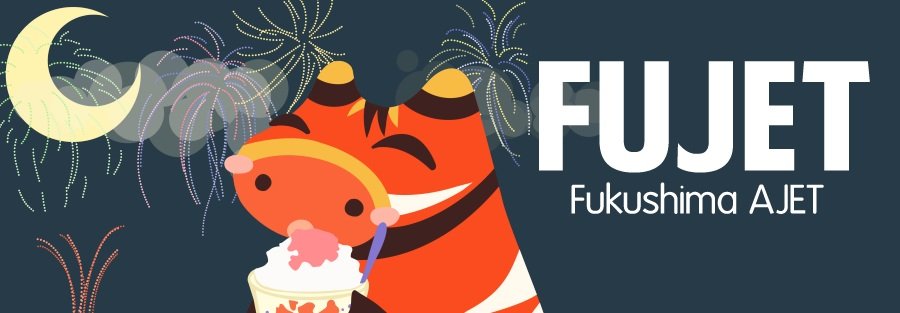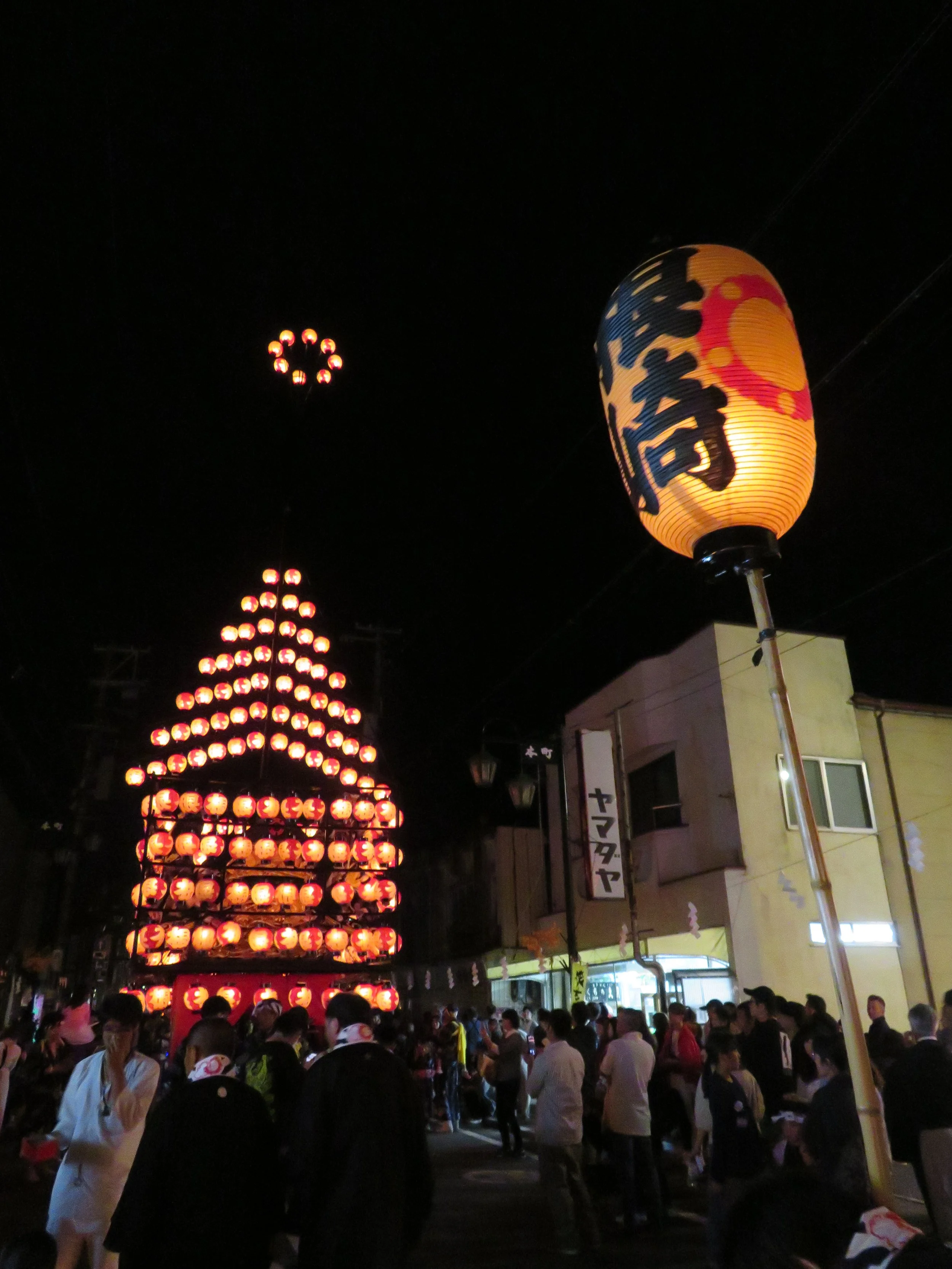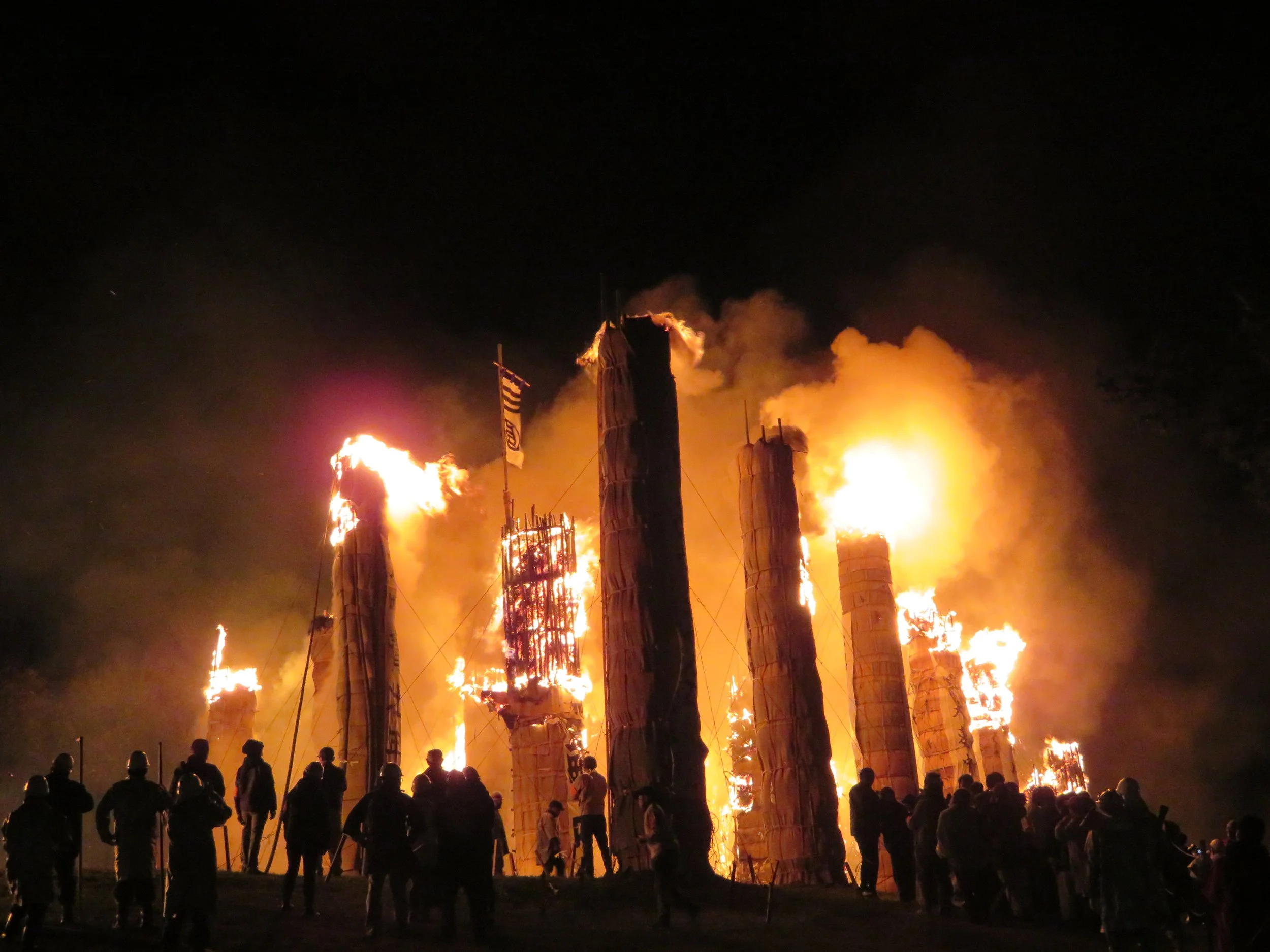Fukushima Events
-
Early January — Enzoji temple Naked Man Festival
Just after New Year’s, the men and boys of Yanaizu town dress in mawashi loincloth and run barefooted through the snow to Enzoji temple. There they climb up the temple bell, in the hope of ringing in good fortune.
Lots of fun as a spectator, not so much as a participant.
-
![]()
February — Shinobu Sanzan Akatsuki-mairi Festival
In this unique festival in Fukushima city, celebrants carry a huge straw sandal, 12 meters long and weighing two tons, to Haguro Shrine on Mt. Shinobu. There, the sandal is offered in prayer in return for such things as a bountiful harvest, good physical health, traffic safety, success on examinations, success in marriage, and safety for one's family. The festival dates back to the Edo period (1600 - 1867), and has been a tradition in Fukushima for over 300 years!
-
![]()
February 28th — Nakano Fudoson Toshi Festival
Nakano Fudoson enshrines the miraculous fire and is renowned as one of Japan's top fire god shrines. The "Toshi Festival" is held every year on February 28, and the principle image, the "warding off evil fire god" is on display. Fires are burned on the altar, and prayers are said to banish evil. The tradition of participants dressing in white frocks, standing under waterfalls, and praying wholeheartedly is sublime.
-
![]()
Mid February — Aizu Painted Candle Festival
Aizu Painted Candles are one of Aizu’s most well-loved traditional crafts. Take in the picturesque snowy scenery in Aizu-Wakamatsu City by candlelight this winter. Aizu Painted Candle Festival takes place at Tsurugajo Castle and Oyakuen Garden on the 2nd Friday and Saturday of February.
Look out for a surprise akabeko sighting!
-
![]()
April — Ryozen Shrine Grand Festival, Date City
This festival celebrates the history of the turbulent Nanbokucho (Northern and Southern Court) Period (1336-1392) , when the conflict between rival Imperial courts divided the nation. Several young men in samurai costume offer the Sword Dance to the local shrine deity. These young men, the Ranjo-burakutai, perform a ritualistic dance to enter the shrine, to the accompaniment of Japanese flutes and taiko. The swordsmen are followed in quick succession by four young girls with lion masks on their heads. The Shishi-no-mai (lion dance), with a history of 200 years, provides a quirky, light-hearted juxtaposition to the sword play.
-
![]()
May & August — Hinoemata Kabuki Performance, Hinoemata Village
Begun in the 18th century, this kind of Kabuki performance by farmers is rarely seen nowadays. In Hinoemata rural kabuki re-enacts tales of the medieval Taira (Heike) clan, whom the villagers claim as their ancestors. Originally, when boys became 15 years old, they were allowed to join kabuki. In rural kabuki it is not unusual to see women playing female roles although mainstream kabuki theatres have only male actors. When the story rises to a climax, the actors strike a mie pose and stand like statues. This is the highlight of their performance.
-
![]()
End of May — Soma-Nomaoi Festival, Soma City
Dating back 1,000 years, this festival has been handed down in places that once belonged to the Soma clan. It spectacularly recreates the atmosphere of the Warring States Period (1467-1568). Some 500 horsemen in samurai costumes scramble for shrine flags, which are shot into the air with a burst of fireworks. The Soma-Nomaoi is said to have its origins in the early 10th Century when samurai warriors of this land secretly commenced their military exercises. Overseas, this event is considered to be one of Japan's most representative festivals.
-
![]()
July — Tajima Gion Festival, Minamiaizu Town
In this festival, which dates back 800 years, men wearing traditional kamishimo attire and young women dressed in bridal costumes, all carrying offerings of rice wine and festival foods, parade through the town to the local shrine. On the first day floats are paraded around Tajima carrying townspeople who play music and perform Kabuki plays. The second day is considered the highlight by many, and is when the young men and women parade in traditional attire, carrying offerings to the local shrines. The final day of the festival is filled with sacred music and dancing.
-
Early October — Nihonmatsu Lantern Festival
This energetic festival is held every year on the 1st Saturday, Sunday, and Monday of October. The highlight of the festival is the procession of festival floats which happens during the first evening.
Seven large festival floats adorned with lanterns and filled with local people playing taiko drums make their way through the streets of Nihonmatsu City, filling the air with festival music. The final destination for the floats is Nihonmatsu Shrine.
The sight of 3000 lanterns burning against the night sky is one that won’t be forgotten.
-
Mid November - Sukagawa Fire Festival
Held on the 2nd Saturday in November, Sukagawa’s Taimatsu Akashi Festival honours the souls of samurai and commoners who lost their lives in a war around 400 years ago. Men and boys of all ages carry 22 three-ton torches to the top of Mt. Goro, then the gods are brought in flames from Nikaido Shrine. At sunset, young men climb the torches and set them alight with the sacred flames.
Find the latest information here.
-
![]()
Early December — Kohata Banner Festival
In Nihonmatsu-shi on the first Sunday in December, there is the Kohata Banner Festival. It originates from “Zen Kunen no Eki” or Earlier Nine Years' War (1051-1062). When Minamoto no Yoriyoshi and his son Yoshiie were defeated by Abe no Sadato, they took flight into the mountains with a few vassals and made a prayer for winning the battle. During the night it snowed so much the mountains were covered. Abe no Sadato, who saw this in the next morning, mistook it for white flags and returned without fighting, which led to the victory of the Minamoto forces who were successfully able to bring Mutsu Province under control. The festival is counted as one of top three Banner Festivals in Japan. The men in Yamabushi (mountain practitioner) costumes carry large banners in five colors of white, red, blue, yellow and pink, and march along the ridge of Mt. Kihata, blowing horagai (conch-shell trumpets).











